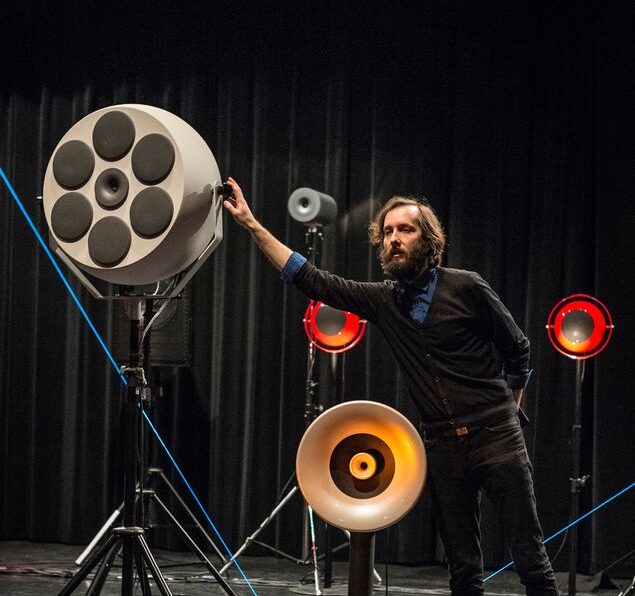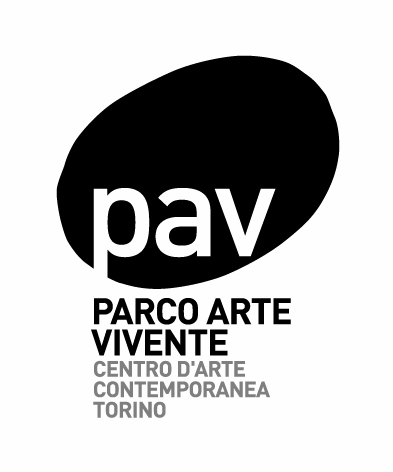Being Open to the Pure Moment of Listening – Francois Bonnet interviewed by Anton Spice

The following interview comes from the sixth issue of Ecoes, Sonic Acts’ periodic magazine about art in the age of pollution. Read this and much more in print by pre-ordering a copy from Sonic Acts webshop.
Under his project name Kassel Jaeger, François J. Bonnet performed live at Expanded Experience on 24 February 2024. His work Étude spectrale (2018) was also diffused through the Spatial Sound Platform at Zone2Source and online every Saturday afternoon from 3 Feb to 9 March.
As a teenager, François J. Bonnet didn’t like going to concerts. Far from piquing his senses, the idea of socialising and drinking warm beer at the back of cramped venues would cause him to shut down. Instead, Bonnet preferred to listen to music alone, at home, on headphones, in the dark. That Bonnet has since become the director of INA GRM seems quite fitting. The contemporary incarnation of Pierre Schaeffer’s electro-acoustic music studio Groupe de Recherches Musicales in Paris, INA GRM furthered the idea of acousmatic music composed not for live performance but for speakers or headphones. The Acousmonium, a large-scale speaker orchestra developed in 1974 to diffuse electroacoustic compositions, remains its centrepiece – as was the case at Sonic Acts’ Inner Ear(th) programme in 2022.
A composer himself, Bonnet makes recordings under the alias Kassel Jaeger that fall somewhere between electroacoustic, drone, ambient, and other such imperfect linguistic markers. He has released albums on independent labels Editions Mego, Black Truffle, and Shelter Press, with whom he also co-curates a series of publications called SPECTRES. A keen collaborator, he has a close working relationship with electronic composer Éliane Radigue, whose music he interprets and performs on a regular basis. His latest album as Kassel Jaeger, Shifted in Dreams, has been recomposed for audiovisual collaboration with cinematographer Eléonore Huisse and will be presented at Sonic Acts Biennial 2024.
Call it Stockholm Syndrome or sheer obstinacy, but for someone innately sceptical of the ability of language to describe sonic experience, Bonnet’s practice has also successfully gravitated towards writing. His debut work, The Order of Sounds (2016) – perhaps more accurately titled Les mots et les sons [Words and Sounds] in French – followed by The Infra-World (2017), and After Death (2020), all published in English by Urbanomic, explore the slippery bounds of sound and music with surgical rigour.
If his ideas are sometimes overwhelming – the 2020 manifesto The Music to Come asserts that ‘music is not music, it is the promise of music’ – Bonnet’s thinking is not about obfuscation, but rather a genuine need to articulate the sensations such as those he remembers from when he was as a child. And serious as he may appear, Bonnet is often self-effacing. ‘It’s maybe silly’, he says at one point, ‘I don’t know if it makes sense’ at another, careful to avoid overly academic language in favour of images that bring his ideas to life.
What graces the cover of The Order of Sounds is a photo of a young Éliane Radigue holding a seashell to her ear. For Bonnet, that we hear the sound of the sea in it, rather than the rush of our own blood, is a cultural construct. The seashell represents the empire of language that captures the listening experience and refuses to let it go. Listening to experimental music, he believes, should be like listening to the waves at the beach. Shed our cultural baggage, our expectations of rhythm, melody and meaning, and what we’re left with is pure sensation. Inevitably, it was with the sensorial act of listening that our conversation began to unfold.
Anton Spice: What frst drew you to working with sound? Did you always have a sensitivity towards the sonic world around you?
François J. Bonnet: I would say so, but it didn’t really appear to me as such back in the day. If we’re talking about childhood, I was maybe just hyper-sensitive to everything. There is a story that my mother told me from when I was very little. We were at a restaurant and an old man came and talked to her and said, ‘this kid is going to be a great sketcher because he looks at everything’. At frst, I did indeed draw quite a lot, but I always had a special relationship with sound, especially sound in the distance. Sound as a sensitive expression of remote things. I have vivid memories of my mother playing [Erik] Satie on the piano while I was upstairs in my room in bed. Even then, I was already listening from a distance.
AS: I like this image because it grounds music within a physical environment. It exists within rooms and among other sounds too. It seems to blur the boundaries of what music is in the context of a wider world of sound.
FB: That’s very true. For me, sound has always been linked to the travelling of sound. Sound on a journey from where it was to my ears.
AS: You began to immerse yourself in sound through playing instruments, but your career has always been something of a give-and-take between the technical aspects of sound engineering and the creative world of composition. At what point did you decide to opt more fully for the latter?
FB: There are two layers to that. I was always experimenting with stuff. I was very bad at following a score when I was learning to play the piano. As a teenager, when I played the guitar with my band, we very quickly gave up being a cover band because it was boring. For me, it was always more about inventing things. In this respect, I have always associated the musical with creation, rather than conforming to or playing something that already exists. The other aspect is that being a composer carries a certain status. It’s very common in our generation to have a defance of this term because it is very authoritative and loaded with connotations. But I think a lot of people should claim to be composers, because it is what they do. It’s a way of taking back this word and the concept, towards something a bit less authoritative, abstract or academic.
AS: In an interview you did with composer Kali Malone, you describe her approach to composition as ‘anti-romantic’, eschewing the image of the composer as an omnipotent entity in favour of something more like ‘selfess expressivity’. Listening to what you are saying, I wonder whether this is a description you would apply to yourself too?
FB: It’s interesting, I’m quite an advocate for returning to romanticism. I think there’s a self-effacing element in my music, but it’s not about putting the human aside. I play with emotions and the cultural background of the listener, trying to make the music drift from a comfortable zone, dragging the listener away, and placing them into a special listening experience.
When we talk about this articulation between romanticism and the egotistic display, I think it’s interesting to go back to what romanticism was at one point, which was about facing the more-than-human aspects of our surroundings. I think it’s something that we have forgotten. Lots of music I know is very dialectic and primarily based on a cultural discussion, which is totally fine, but for me, the key point is to offer an experience through listening, an experience of being displaced from what you are, and if possible, to engage in a kind of bare relationship to your own perception. This idea of romanticism can be incorporated without the glorifcation of ego that very quickly came to be associated with the romantic figure of the genius. I think there can be a selfess romanticism at work in music, and that might be something that I’m doing.
Read the whole interview via Sonic Acts
Photo: François J. Bonnet. Photo by Didier Allard © INA. Courtesy of the artist.
Partner organisation















